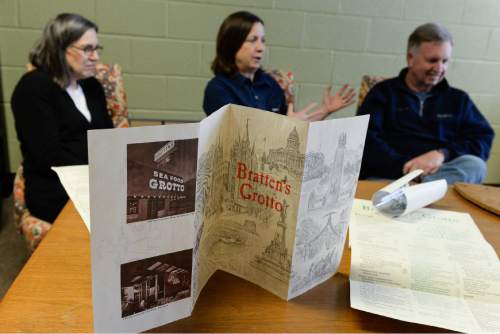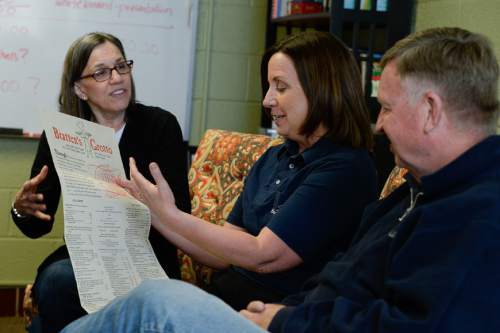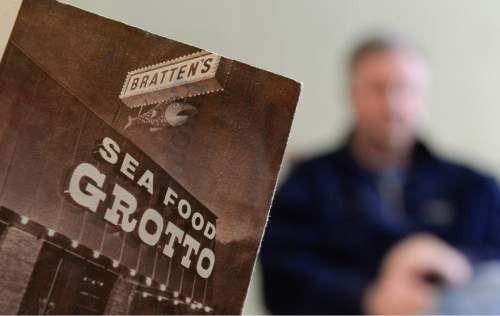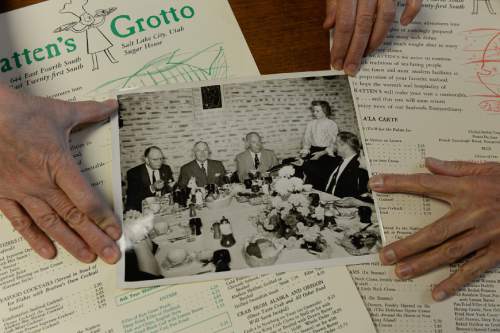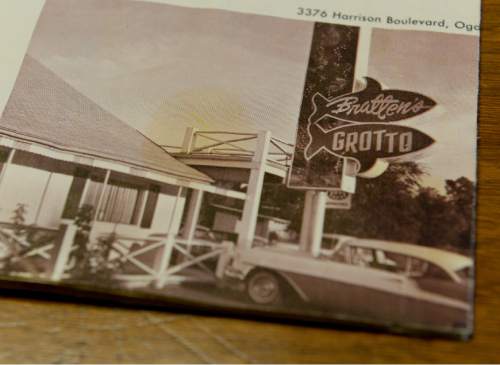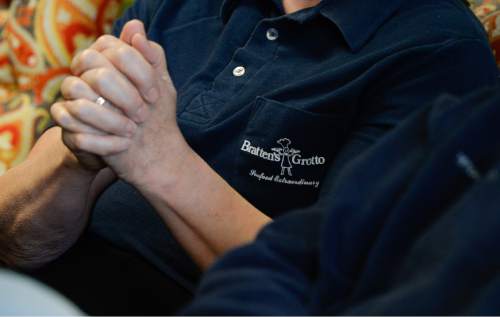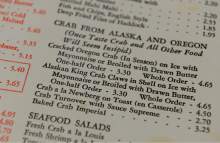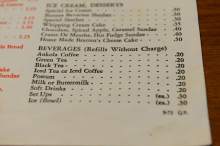This is an archived article that was published on sltrib.com in 2015, and information in the article may be outdated. It is provided only for personal research purposes and may not be reprinted.
Editor's note • In this regular series, The Salt Lake Tribune explores the once-favorite places of Utahns, from restaurants to recreation to retail. If you have a spot you'd like us to explore, email whateverhappenedto@sltrib.com with your ideas.
While restaurant options were limited six decades ago, Utahns were still able to enjoy big-city delicacies such as crab legs, lobster tails and oysters on the half shell when they dined at Salt Lake City's beloved Bratten's Seafood Grotto.
The original restaurant opened in about 1953, when Herbert Hyde, operator of C.J. Bratten's seafood distribution and fish market, became business partners with local entrepreneur and political leader Milton Weilenmann.
The co-owners expanded the fish market at 644 E. 400 South to include a sit-down restaurant, where fish was the focus.
"It was one of the first specialty restaurants in Salt Lake," explained Mike Weilenmann, Milton's son and the eldest of his seven children. "There weren't any restaurant chains back then and certainly no ethnic restaurants" like there are today.
The restaurant closed in 1988, but during its 35-year run it was a favorite spot for birthdays, anniversaries, first dates and special occasions. On the weekends, there often was a 45-minute wait.
The interior was inviting, with a seafood motif that included fishing nets on the walls and waitresses in white sailor outfits with red and blue trim.
"It was my Opa's favorite restaurant," remembers Rachel Arent Kade, owner of Frisch Compassionate Eatery. "I fondly remember their big door handles that looked like fish."
Once seated, guests were served a complimentary relish plate with olives, celery and bread to enjoy while perusing the four-fold menu decorated with pencil drawings of the state Capitol, the Salt Lake City LDS Temple, the Great Salt Lake and other Utah landmarks.
The menu was filled with "Seafoods Extraordinary," as Milton Weilenmann called them. There were seafood cocktails, clams, crab, deep-sea scallops; shrimp or prawns "from both oceans"; freshwater fish "from lake and stream"; seafood salads and even an open face fried oyster sandwich.
Every entree came with a choice of one or two side dishes, the most popular of which was the creamy clam chowder (see recipe).
The prices were reasonable. In 1973, the popular baked halibut au gratin dinner with sides and a drink was $3.95. The most expensive menu items included the broiled Australian lobster tail dinner for $8.75.
Not long after opening the first Bratten's, the partners expanded. Weilenmann opened Bratten's at 1355 E. 2100 South, the current location of The Dodo, and on Harrison Boulevard in Ogden; while Hyde and his wife, Ruby, owned and operated a Bratten's restaurant in Bountiful.
Mike Weilenmann, his six siblings, as well as cousins and many friends worked at the restaurants on and off through junior high, high school and into college.
One of those cousins was Scott Anderson, the current president of Zions Bank. Anderson stocked shelves, then moved up to be a busboy and a later a waiter while in junior high and high school.
"My Uncle Milt was a hero to us, larger than life," he said. "He taught us how to work hard and provide good service to customers."
While owning the restaurant Weilenmann also served as the chairman of the Utah Democratic Party and was the first director of the Utah Department of Economic Development under then-Gov. Calvin Rampton. He also owned and operated the Della Fontana Italian restaurant and the Print Shop in Arrow Press Square in Salt Lake City.
Because of his political and community involvement, Bratten's was often where leaders and policymakers hashed out ideas.
Even President Harry S. Truman dined at the restaurant. The Weilenmann siblings still have a black-and-white photo of the president seated at a table while their mother, Marie, hands him a Bratten's menu.
Daughter Merry Weilenmann Fusselman said part of the reason her father was such a successful businessman was that he treated everyone the same, whether you were the president of the United States or the person who peeled potatoes in the kitchen.
Fusselman, who met her future husband in 1969 while working as Bratten's hostess, said her father "wanted to make it a place where people felt welcome and were fed well."
Bratten's Clam Chowder
2 (6½ ounce) cans minced clams
1 cup diced celery
1 cup diced onion
2 cups peeled and diced potatoes
3/4 cup butter
3/4 cup flour
1 quart half and half
1 1/2 teaspoons salt
Pepper to taste
Drain juice from the canned clams. Place diced celery, onions and potatoes in a pot. Pour clam liquid over the vegetables. Add more water, if necessary, so the vegetables are just covered with liquid. Bring to a simmer over medium heat. Cook until vegetables are just tender, about 15 minutes.
In a separate pan, melt butter, sprinkle in flour, whisking until the mixture is smooth. Stirring constantly slowly add half and half to the roux. Cook and stir with a wire whisk until mixture is thick and smooth. Stir in vegetables, juice and clams. Heat through. Season with salt and pepper to taste.
Servings • 8
Source: Bratten's Seafood Grotto


